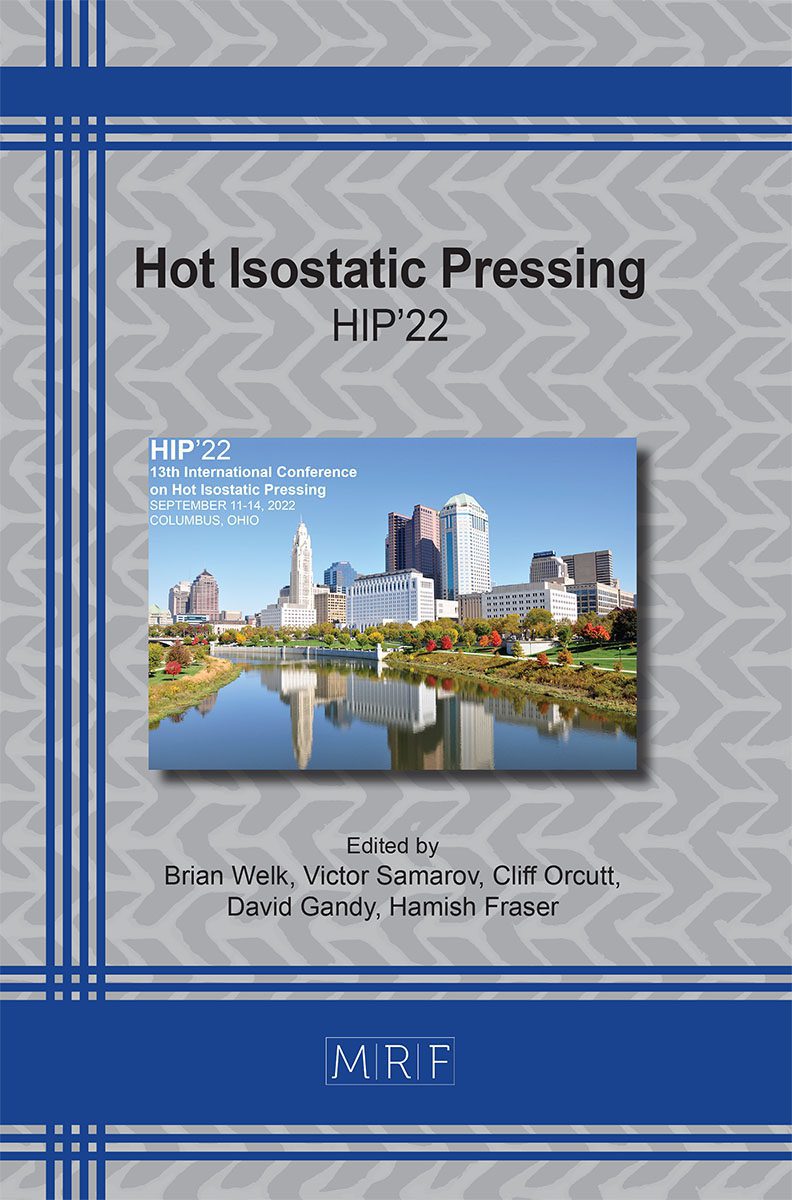PM-HIP for Nuclear: Outlook, Technology and Applications
David W. Gandy
download PDFAbstract. Significant reductions in CO2 greenhouse gas emissions must be realized to meet the US goal of a 50% overall decrease by 2030. To further meet the net-zero emission goal by 2050, substantial reductions across three primary sectors (electricity, transportation, and industrial/buildings) must also be realized. Within the electricity sector, these significant reductions can only be accomplished through the replacement of much of the existing power generation infrastructure with renewables, hydrogen, natural gas, storage and new nuclear. It is anticipated that by 2050, the US will have to replace nearly 800GW of fossil and nuclear power generation assets (Note: 1GW = ~750,000 homes or 2 coal-fired power plants). This paper highlights several planned nuclear units (40 units) that are slated for production by the 2030 timeframe. If the PM-HIP community wants to be a part of this transition and support new nuclear, it too must begin work immediately to both qualify new materials/components and further develop its infrastructure for new component manufacturing and fabrication. This paper provides an overview of the current materials that are accepted within the ASME Boiler and Pressure Vessel Code and highlights recent changes which will allow PM-HIP materials/components to be more easily integrated and accepted into the Code. Additionally, this paper identifies many of the key needs for PM-HIP to be considered part of the new build equation including two enabling technologies: PM-HIP modeling & design and large PM-HIP capabilities, along with three additional supporting needs: powder production, scaling of components, and engagement of the end-user community.
Keywords
Hot Isostatic Pressing, Power Generation, Nuclear Energy, Modeling, Alloys, Powder Production, Large HIP
Published online 12/8/2023, 10 pages
Copyright © 2023 by the author(s)
Published under license by Materials Research Forum LLC., Millersville PA, USA
Citation: David W. Gandy, PM-HIP for Nuclear: Outlook, Technology and Applications, Materials Research Proceedings, Vol. 38, pp 1-10, 2023
DOI: https://doi.org/10.21741/9781644902837-1
The article was published as article 1 of the book Hot Isostatic Pressing
![]() Content from this work may be used under the terms of the Creative Commons Attribution 3.0 license. Any further distribution of this work must maintain attribution to the author(s) and the title of the work, journal citation and DOI.
Content from this work may be used under the terms of the Creative Commons Attribution 3.0 license. Any further distribution of this work must maintain attribution to the author(s) and the title of the work, journal citation and DOI.
References
[1] N. Wilmshurst, Economy Wide Decarbonization, Supply Chain Opportunities, EPRI Supply Chain Workshop, Dallas, TX, June 15, 2022.
[2] Supply Chain Challenges and Opportunities for Structural Components in Advanced Energy Systems: EPRI Workshop Summary. EPRI, Palo Alto, CA: 2022, EPRI Report 3002025254.
[3] H. Lane, North American Roadmap—Nuclear Energy Institute, EPRI Supply Chain Workshop, Dallas TX, June 15, 2022.
[4] K. Silverstein, The Inflation Reduction Act Will Spawn Nuclear Energy’s Growth, Forbes Magazine, August 22, https://www.forbes.com/sites/kensilverstein/2022/08/22/the-inflation-reduction-act-will-spawn-the-growth-of-nuclear-energy/?sh=2b6f0c5b4158
[5] Advanced Reactor Materials Development Roadmap, EPRI Report 3002022978, October 2021,https://www.epri.com/research/products/000000003002022979
[6] Van Nguyen et al. A combined model to simulate the powder densification and shape changes during hot isostatic pressing, Computer Methods in Applied Mechanics and Engineering, 2017 Volume 315, Pages 302-315.
[7] Kohar et al. A new and efficient thermo-elasto-viscoplastic numerical implementation for implicit finite element simulations of powder metals: An application to hot isostatic pressing, International Journal of Mechanical Sciences Volume 155, 2019, Pages 222-234
[8] K. Kim and H. Yang, Densification behaviour of titanium alloy powder under hot isostatic pressing. Powder Metallurgy. Volume 44, 2001 – Issue 1, Pages 41-47
[9] D. Lasalmonie et al. Hot Isostatic Pressing of SY 625 Powder, Superalloys Conference, 1998
[10] Zhou et al, Numerical Simulation and Optimization of the hot isostatic pressure process of a part of aircraft structure, Procedia manufacturing 37 (2019), 138-145
[11] Essa, Khamis, et al. An iterative approach of hot isostatic pressing tooling design for net-shape IN718 superalloy parts. The International Journal of Advanced Manufacturing Technology 83.9-12 (2016): 1835-1845.
[12] Svoboda, Ales, L. Bjork, and H. A. Haggblad. “Determination of material parameters for simulation of hot isostatic pressing.” WIT Transactions on Modelling and Simulation 12 (1970).
[13] Atkinson, H. V., and S. Davies. “Fundamental aspects of hot isostatic pressing: an overview.” Metallurgical and Materials Transactions A 31.12 (2000): 2981-3000.
[14] Klar, Erhard, and Prasan K. Samal. Powder metallurgy stainless steels: processing, microstructures, and properties. ASM international, 2007.
[15] Beiss, P., and M. Dalgic. “Structure property relationships in porous sintered steels.” Materials Chemistry and Physics 67.1-3 (2001): 37-42.
[16] EPRI/DOE Report 3002019335, Small Modular Reactor Vessel Manufacture and Fabrication—Phase 1 Progress (Year 2), Technical Update, April 2020.































